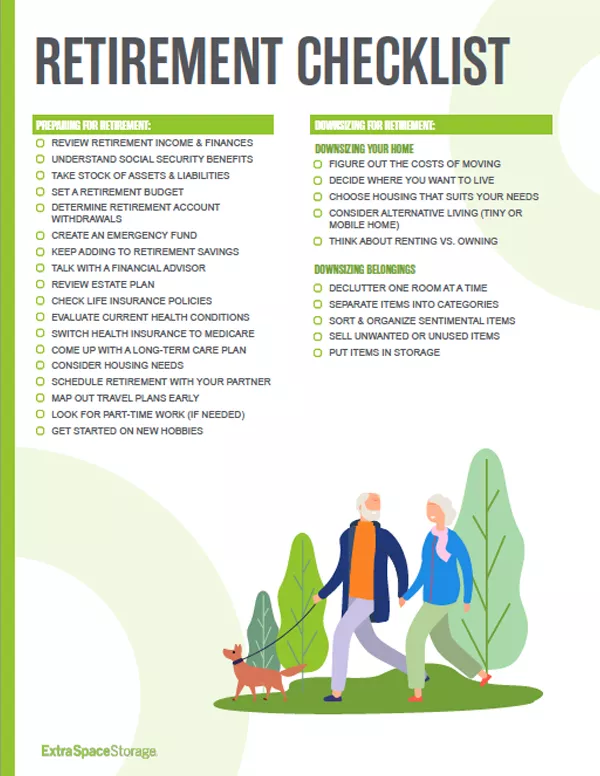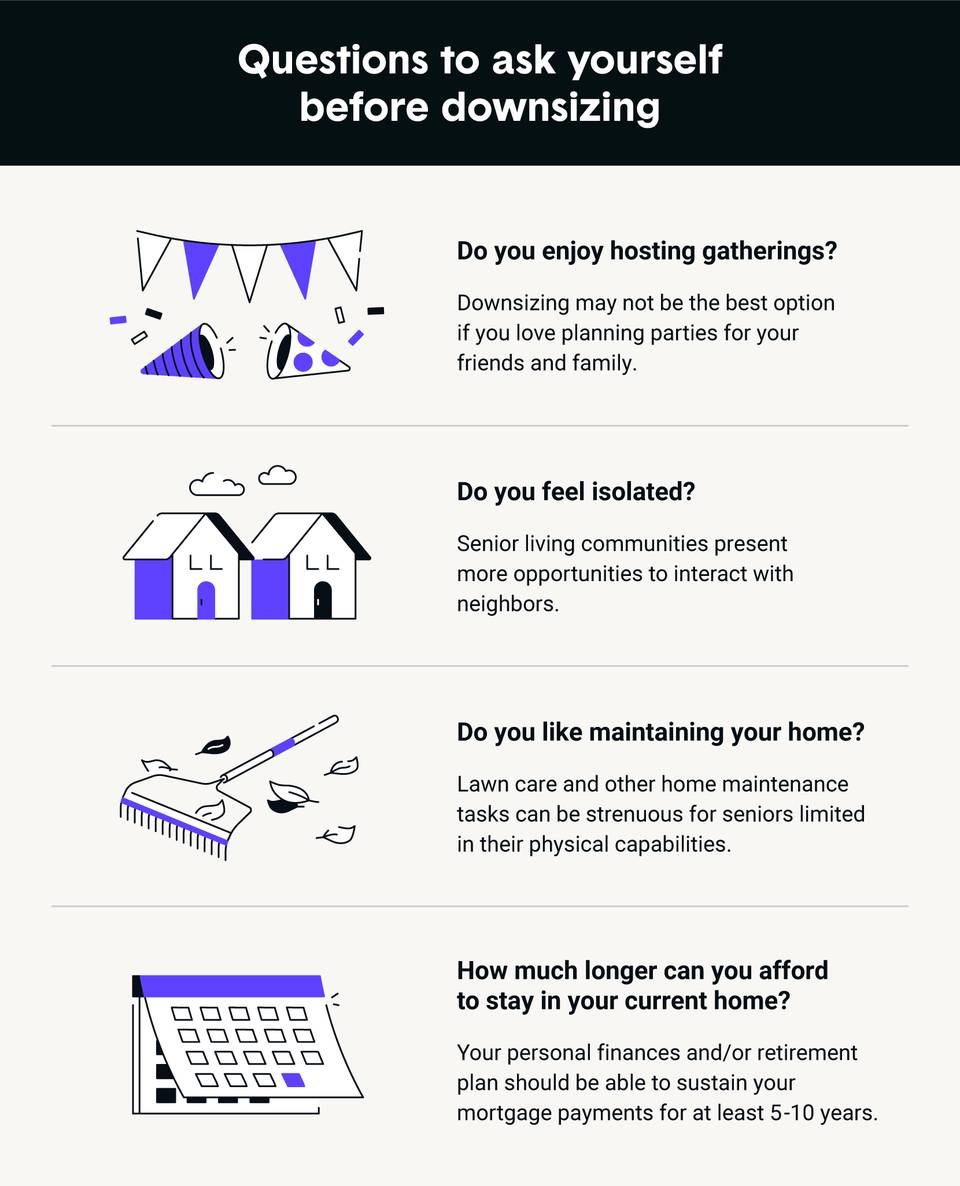A common misconception is that downsizing one’s home in retirement merely means moving into a smaller space. Yet, it’s a strategic move that often involves decluttering a lifetime of belongings and making intentional choices about the future. For many retirees, this decision can improve both financial stability and lifestyle satisfaction.
Historically, the trend of downsizing has become more prevalent as retirees seek to minimize expenses and maintenance responsibilities. A study by the National Association of Home Builders found that over 60% of retirees prefer to live in a smaller, more manageable home. Embracing this shift not only simplifies life but can also unlock equity that supports other aspects of retirement planning.

Recognizing the Need to Downsize
Realizing when it’s time to downsize can be challenging. Some signs might include struggling with home maintenance or finding certain areas unused. It’s essential to evaluate your current living situation honestly.
Financial considerations play a crucial role. A smaller home often means lower utility bills and fewer repair costs. This can significantly ease financial pressure during retirement.
Another aspect to consider is your lifestyle. Do you travel frequently, or spend more time away from home? A smaller home can offer the flexibility you need.
Health and mobility are important factors too. Large homes can become difficult to navigate as we age. Downsizing allows you to choose a more accessible living space.
Evaluating Your Space Needs
Assessing your space needs starts with identifying areas of your home that you rarely use. Are there rooms that have become storage spaces rather than living areas? This can be a sign that your home is too large for your current lifestyle.
Think about the future. Are you expecting visits from family or friends that might require guest rooms? If not, these spaces may not be necessary.
Lastly, consider the emotional aspect of your home. Does it still feel like a sanctuary, or has it become a burden? Your comfort and happiness are vital in making the right decision.
Downsizing Your Home in Retirement (4 Tips to Make it Manageable)
Preparing for the Downsizing Process
Preparing for downsizing involves a bit of planning and organization. You want to make sure you don’t feel overwhelmed. Breaking the process into manageable steps can make it much easier.
It starts with evaluating what you need and what you don’t. Sentimental items can be tough to part with, so focus on keeping what truly matters. Items that don’t serve a purpose can be donated or sold.
Another key step is setting a timeline. Having deadlines helps keep you on track and ensures you’re ready for the move. A detailed plan can save you from last-minute stress.
Finally, consider hiring professionals. Movers, organizers, and even estate sale experts can provide invaluable assistance. They can handle the heavy lifting and offer guidance.
Prioritizing Your Belongings
Begin by making three categories: keep, donate, and sell. Start with one room at a time to avoid feeling overwhelmed. This method will help you see your progress more clearly.
Make use of a garage sale or online marketplaces to sell items. This not only helps get rid of surplus belongings but also adds some extra cash. Special items can find appreciative new homes.
- Sort and purify regularly
- Enlist help from family for hard decisions
- Use storage solutions for what you keep
De-cluttering and Sorting Items
Take it slow but steady. Aim to de-clutter a little bit every day rather than all at once. Small, consistent efforts make a big difference.
Properly label and organize boxes. Clearly marked boxes save a lot of time when unpacking. Use large labels to avoid confusion.
Consider donating usable items to local charities. Many organizations offer pick-up services, which simplify the process. Helping others makes the decluttering feel rewarding.
Donating or Selling Unneeded Items
Donating is a great way to give back to the community while clearing space. Many donation centers will accept gently used furniture, clothes, and kitchen items. Check their guidelines to know what they accept.
Selling items online can be straightforward with platforms like eBay or Craigslist. For higher value items, local auctions or specialty shops might be better options. Always take good photos and write clear descriptions to attract buyers.
- Donate to local shelters
- Use consignment shops
- Host a community yard sale
Searching for a Suitable Home
When it comes to finding a new home, consider your lifestyle needs first. Think about how much space you really need. Smaller doesn’t always mean less comfortable.
Location is another key factor. Are you looking to be closer to family or healthcare services? A convenient location can greatly improve your quality of life.
Don’t forget to check the home’s layout. Single-story homes are more accessible and safer as you age. Look for features that will make daily living easier.
Amenities can also play a significant role. Communities with shared spaces, fitness centers, and social activities can be very appealing. They provide options for staying active and social.
- Proximity to essential services
- Accessibility features
- Amenities and community facilities
Making a Strategic Financial Plan
Creating a solid financial plan is essential when downsizing. Start by calculating your current expenses and potential savings. This gives you a clear idea of your budget.
Working with a financial advisor can provide valuable insights. They can help you balance your home sale proceeds, retirement funds, and other investments. Professional advice ensures informed decisions.
Plan for both short-term and long-term needs. This includes immediate costs like moving and future expenses such as healthcare. Having a comprehensive plan makes the transition smoother.
Make sure to factor in selling and buying costs. These might include real estate fees, taxes, and repairs. Understanding these expenses helps avoid surprises.
Consider creating an emergency fund. It’s always smart to have some money set aside for unexpected costs. This adds a layer of financial security.
Finally, review your insurance policies. Ensure they cover new risks associated with your smaller home. Updated coverage provides peace of mind.
- Calculate current expenses and potential savings
- Work with a financial advisor
- Plan for short-term and long-term needs
- Factor in selling and buying costs
- Create an emergency fund
- Review insurance policies
Overcoming Challenges in the Downsizing Journey
Downsizing can be an emotional process. Letting go of sentimental items is often the hardest part. Focus on keeping things that bring you joy.
Another challenge is adjusting to a smaller space. It might take time to get used to having less room. Utilize smart storage solutions to make the most of your new home.
Concerns about missing old routines and neighbors are common. Staying connected through visits and calls can ease this transition. Consider joining new community groups to make new connections.
Financial concerns can also be stressful. Unexpected costs might pop up during the move. Having a budget and an emergency fund can help manage these worries.
- Focus on joyful items
- Use smart storage
- Stay connected with old neighbors
- Join new groups
- Maintain a budget
Finally, adapting to a new neighborhood can be daunting. Take time to explore local amenities and meet your neighbors. Building a support network can make your new place feel like home.

Downsizing Your Home After 60? Get Ready to Live!
Conclusion
Downsizing for retirement is a thoughtful process that can lead to greater financial freedom and a more manageable lifestyle. By recognizing the need to downsize and making a strategic financial plan, you set the foundation for a smooth transition. Overcoming challenges with careful planning and support ensures success.
Your new home should reflect your current needs and future aspirations. Embrace the change, knowing that a simpler, more fulfilling life awaits. With proper preparation, downsizing can be a positive and empowering experience.